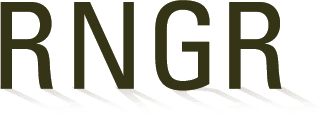Asteraceae (Echinacea)
Echinacea (pallida)
Asteraceae
Sunflower family
Echinacea
pallida
(Nutt.) Nutt.
Echinacea
angustifolia
Variety
pallida
DC.
Nutt.
Pale Purple Coneflower
ECHPAL
Stony soils on summits of slopes or hills, prairie grassland, eastern MT.
E. pallida occurs in dry open prairies from Minnesota to Montana, south through the Great Plains to Texas.
plants
seed
Container (plug)
160 ml conetainer
2 Years
Height: 4 to 6 true leaves, 8 cm
Caliper: n/a
Root System: firm plug in 160 ml conetainer with well developed taproot.
Collect mature seeds when they are easily removed from the head in August and September. Seeds are dark grey at maturity.
Seeds are cleaned with a hammermill and run over with an office clipper.
Seed longevity is unknown.
Seed dormancy is classified as physiological dormancy.
Seeds/Kg:4 00,000/kg
% Purity: 100%
% Germination: 50 to 81%
The best germination rates are obtained with seeds that have been dry stored for 1 to 2 years. seeds are placed into a 60 to 90 day cold, moist stratification at 1 to 3 C and are surface sown for the light requirement. Seeds germinate at 21 C.
Greenhouse and Outdoor nursery growing facility.
Sowing Method: Direct Seeding. Seeds are surface sown.
Growing medium used is 6:1:1 milled sphagnum peat, perlite, and vermiculite with Osmocote controlled release fertilizer (13N:13P2O5:13K2O; 8 to 9 month release rate at 21C) and Micromax fertilizer (12%S, 0.1%B, 0.5%Cu, 12%Fe, 2.5%Mn, 0.05%Mo, 1%Zn) at the rate of 1 gram of Osmocote and 0.20 gram of Micromax per 172 ml conetainer. Conetainers are filled and sown and irrigated thoroughly.
Greenhouse temperatures are set at 21 to 23C (12 hrs) day/15 C (12hrs) night alternating temperature cycle..
Medium is kept slightly moist during germination. Seedlings emerged uniformly. Germination continued for 3 weeks after sowing.
After seedlings are well established, they ust dry down between irrigations.
4 weeks
Root development occurs rapidly following germination. Seedlings had 4 to 6 true leaves 12 weeks after germination.
Seedlings are fertilized with 10-20-20 liquid NPK fertilizer during active growth.
16 weeks
Seedlings begin to go dormant in late summer. Leaves begin to die back to the crown by early to mid August. Increase in root growth continues until frost, and seedlings are fertilized with 10-20-20 liquid NPK fertilizer once per week. Irrigation is gradually reduced in September and October. Plants are leached with clear water before winterization.
8 weeks
Total Time To Harvest: 2 years for sizable seedlings with a well developed taproot.
Harvest Date: September
Storage Conditions: Overwinter in outdoor nursery under insulating foam cover and snow.
5 months
Taproot development averaged 0.5 cm the first year and increased to 1.3 cm by the second year.
Flora of the Pacific Northwest, Hitchcock and Cronquist, 7th edition, University of Washington Press, 1973.
Seeding Rate Statistics for Native and Introduced Species, Hassell, Wendel, U.S.D.I. and U.S.D.A., April 1996.
Seeds: Ecology, Biogeography, and Evolution of Dormancy and Germination, Baskin and Baskin, Academic Press, 1998.
Seed Germination Theory and Practice, Deno, Norman, Penn State University, 1993.
Growing Colorado Plants From Seed: A State of the Art, Vol. 3: Forbs, U.S.D.I. National Technical Information Service, 1982.
Glacier National Park Native Plant Nursery Propagation Records, unpublished.
Luna, Tara; Evans, Jeff; Wick, Dale. 2008. Propagation protocol for production of Container (plug) Echinacea pallida (Nutt.) Nutt. plants 160 ml conetainer; USDI NPS - Glacier National Park West Glacier, Montana. In: Native Plant Network. URL: https://NativePlantNetwork.org (accessed 2025/08/07). US Department of Agriculture, Forest Service, National Center for Reforestation, Nurseries, and Genetic Resources.





